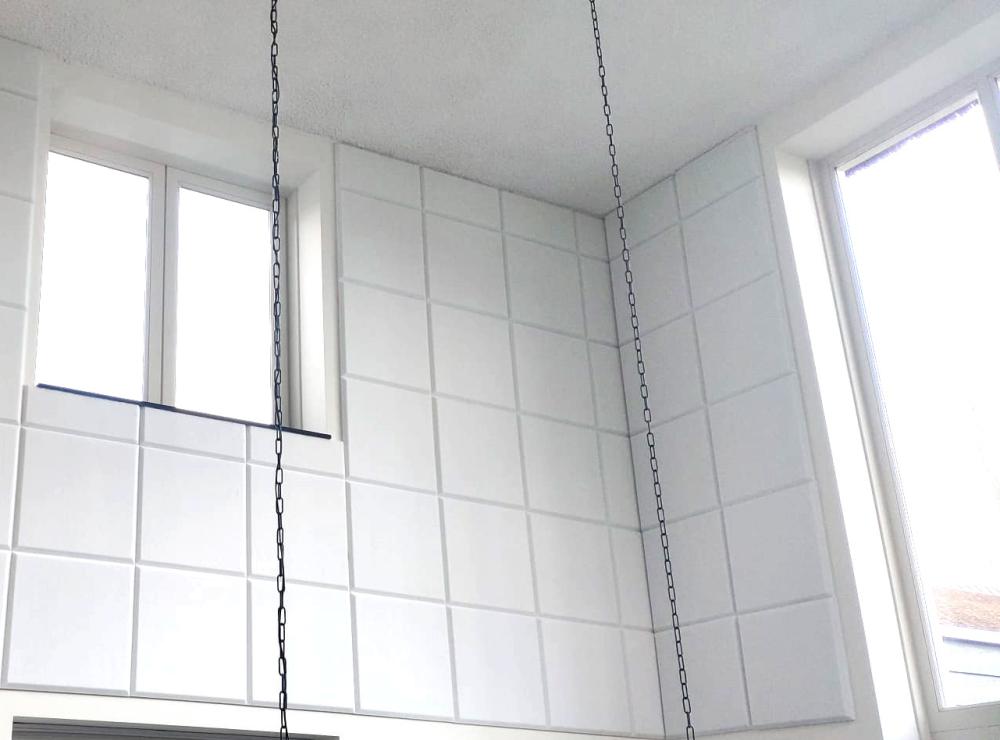-
 Akotherm Basic D40Basic Room Acoustics Panel
Akotherm Basic D40Basic Room Acoustics Panel- High density polyester wool panel
- Sound-absorbing & thermal insulation
- Excellent acoustic properties
(incl. tax)Starting at £16.86
-
 Akotherm EdgeAcoustic Panel with Faceted Edges
Akotherm EdgeAcoustic Panel with Faceted Edges- High density polyester wool
- Acoustic panel to improve acoustics
- Aesthetic look, value for money
(incl. tax)Starting at £16.63
-
 Akotherm SFSound absorbing acoustic panel
Akotherm SFSound absorbing acoustic panel- For better room acoustics
- Aesthetic smooth finish
- Easy to install panels
(incl. tax)Starting at £19.55
-
 Flamex BasicAcoustic Panels & Insulation Sheets
Flamex BasicAcoustic Panels & Insulation Sheets- Acoustic melamine foam
- Sound & Noise insulation
- Improve room acoustics
(incl. tax)Starting at £20.72
-
 Flamex EdgeAcoustic Foam Panel
Flamex EdgeAcoustic Foam Panel- Reduces reverb, improve acoustics
- Mount to wall or ceiling
- Decorative edge of 45°
(incl. tax)Starting at £24.54
- Home
-
Solutions
Select a category to find a solution
-
Brands
Products by brand name
 Sound Insulation
Sound Insulation
- Acousticcell | Noise Insulation
- Acousticcell PU | Sound Insulation
- Acousticcell VSP/ALU | Absorber
- Acoustic Cotton Wool | Insulation
- Akotherm | Acoustics & Insulation
- Flamex | Acoustics & Insulation
- Merfocell | Sound Insulation
- Merfocom | Soundproofing
- Merfodamp | Insulation & Absorber
- Soundstone | Suspended Ceiling Tiles
- Stratocell Whisper FR | Outdoor
- Tips
-
Products
Products by category
- Customer Service
- Sale!
- More than 40 years of experience
- Available from stock within 3 working days
- Take advantage of quantity discounts of up to 25%
- Home
- Improving Acoustics
- Improving home acoustics
Guide on improving acoustics in your home
What causes bad acoustics?
Reverberation and reverb arises when there are far more hard materials in an interior than soft materials. Smooth and hard flooring and ceiling, and the lack of soft carpets and curtains, provide excellent sound reflecting surfaces. This is why sound keeps bouncing around the room which gives the experience that everything, and everybody, sounds loud. To reduce the reflecting and bouncing of sound you have to add (more) soft surfaces in the interior, you might call them carpets and curtains, we call them Acoustic Panels.
How to improve living room acoustics? 
You probably wonder: how many and which acoustics panels should I buy and where do I install them? This partly depends on your situation. You can read the full guide on our Tips Page. In short: the solution consists of applying a sufficient amount of acoustic panels on the first sound reflective surfaces. This might be empty, hard and smooth walls opposite to each to other. Try it, stand in de middle of your living room, where you have a wall on each side of you, and clap your hands firmly. If the acoustics is bad you should hear a loud clap reflecting back to you. There you have it, the fist place to mount some acoustic panels, on one of those walls, not both.
Use thick panels, 40 to 50 mm, if the sound consist of low- mid- and high frequencies. Use medium thick panels, 25 or 40 mm, if the reflections sound short, but kind of metallic. If you mount panels on one wall, cover about a quarter of the wall, you should have a nice result. You can add more later if you like, but chances are that the acoustics in that particular spot are improved to your liking's.
If you do not want mount acoustic panels to walls, the ceiling is the next best spot. In large rooms the ceiling is always the place to go. For bigger rooms have bigger sound reflecting spots, so more absorption of sound needed, in most cases the ceiling provides more space to mount a sufficient amount of acoustic panels. If you opt for a ceiling solution, you might need more paneling than with a wall solution, in most cases you best double the amount.
Calculating the amount of acoustic panels
The rule of thumb for improving the acoustics. Let's say you have a room of about 100 m², than it is most likely you need to install about 30 to 40 m² of acoustic panels. Don't concentrate the panels in one part of the room, but spread them throughout the room. After all you want to be improving the acoustics in the whole room, not just one spot. Do not buy to much, when the acoustics is good, it's good. You can always add more panels later on. And as always, advice is free, just let us know what your questions are!
Guide & Tips page
On our Tips Page you will find extensive guides on improving acoustics, not just for your home, but also at work, restaurants and bars and about outdoor acoustics.
Acoustic panels for improving room acoustics in your home:
Would you like to switch to our store in your language?

 Soundproofing
Soundproofing  Vibration Isolation
Vibration Isolation  Silent Ventilation
Silent Ventilation  Accessories
Accessories  Thermal & Acoustic Insulation
Thermal & Acoustic Insulation